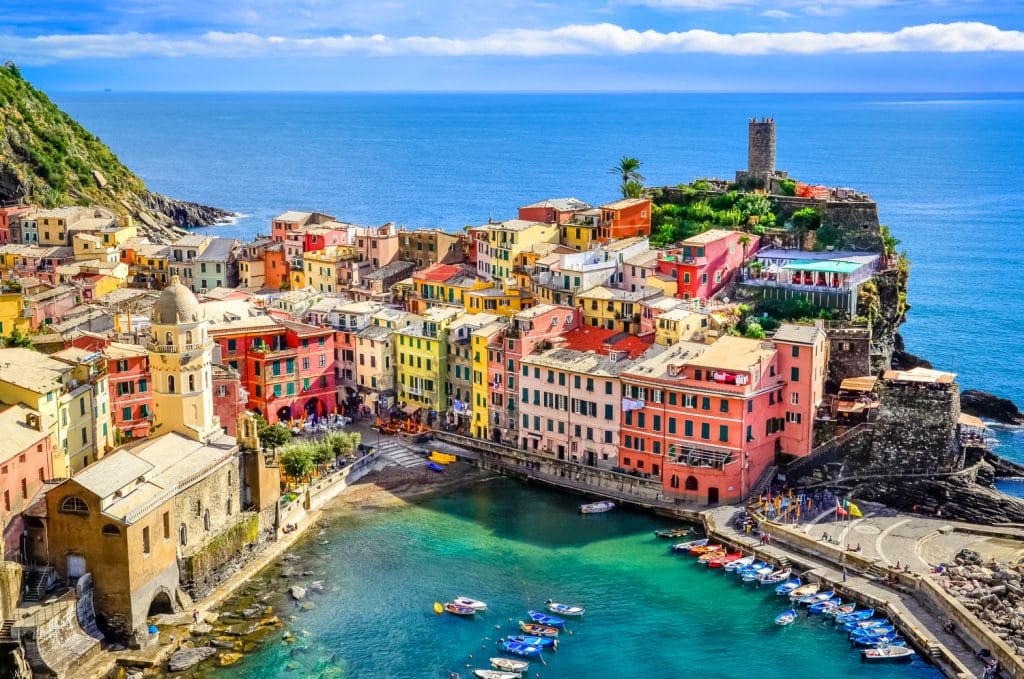

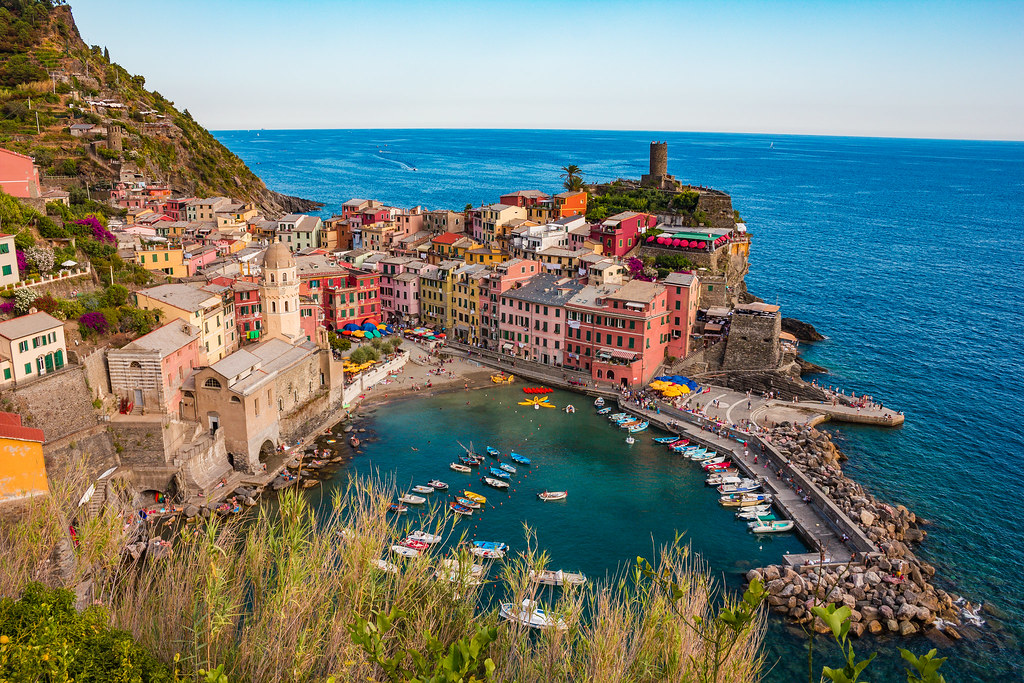
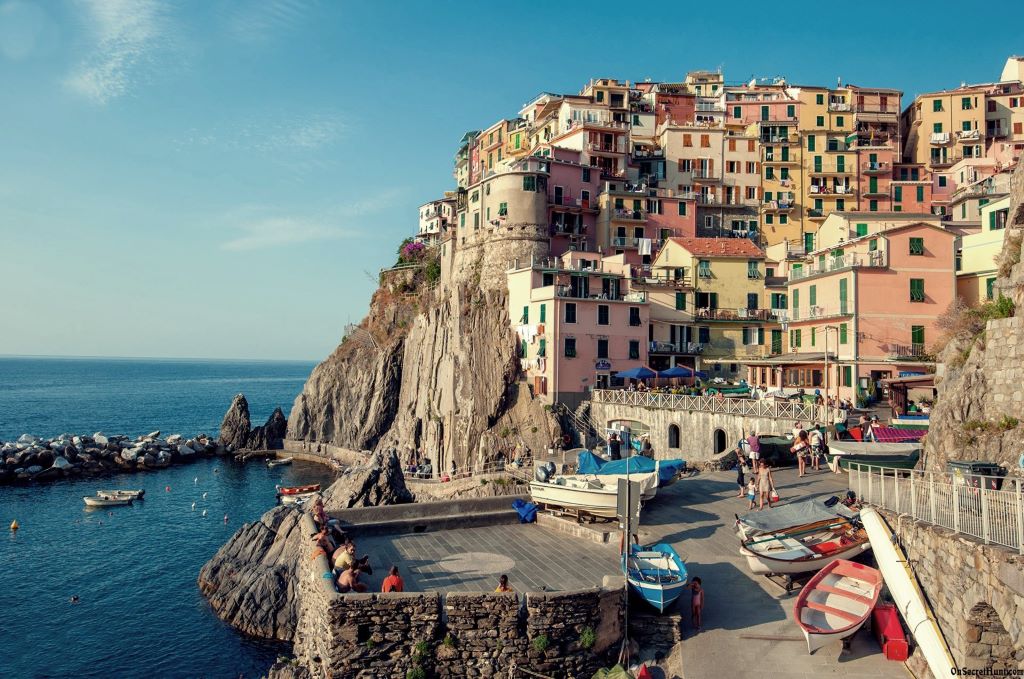
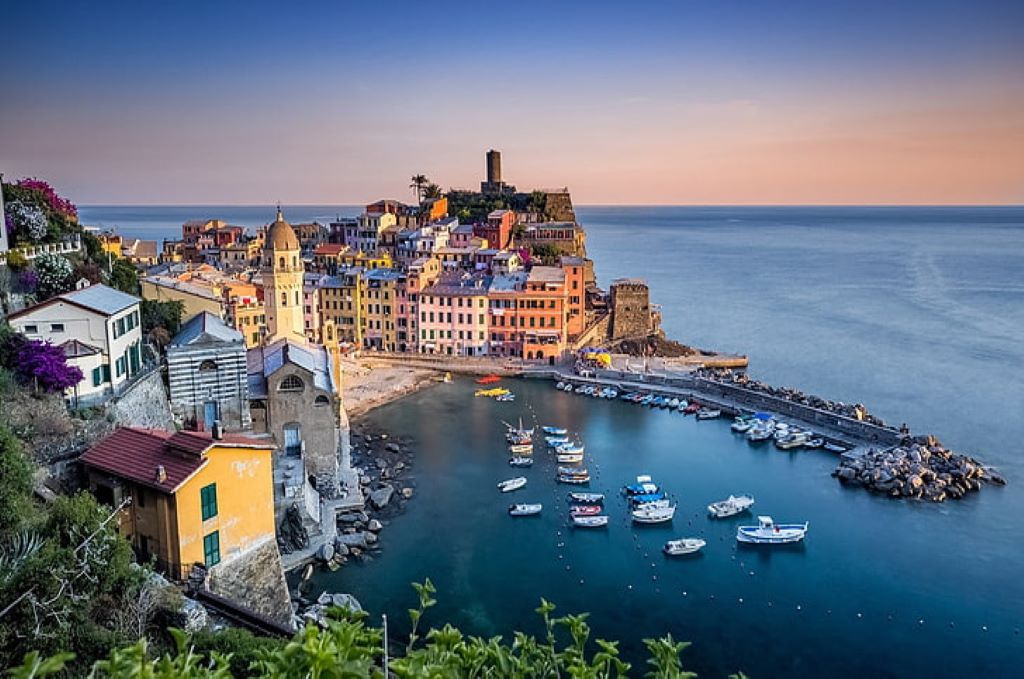
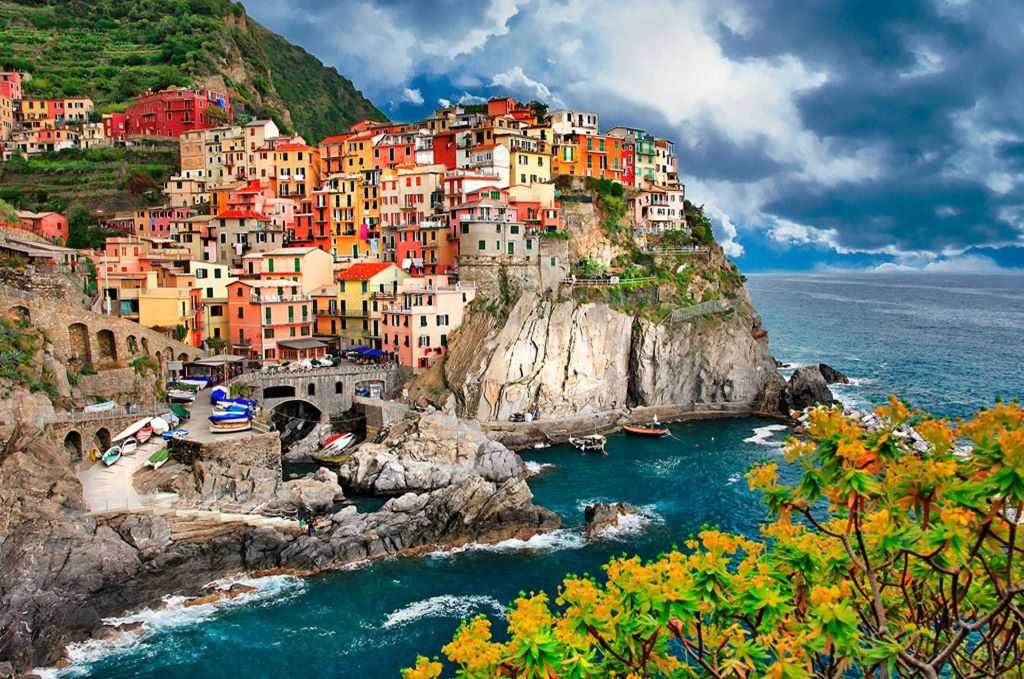
The best view in Italy.






History of Cinque Terre
The name "Cinque Terre" dates back to before the fifteenth century but the story of the coast on which the small towns are located dates far back. The historic remains founded here, such as bones and primitive tools found, prove the presence of the primitive individuals. The ancient Romans occupied this zone by taking it with great complication from the Ligurian inhabitants. Harsh conflicts on a hostile war round that was a tempting conquest for who aspired to tactical points on the Mediterranean Sea.
In fact, because of its strategic position on the Mediterranean Sea for centuries went through the anger of ruthless populations of diverse empires. Even earlier, this maritime centre had been besieged by the barbaric tribes coming from the north of Europe, then by Byzantines, by Lombards. Also its tactical location for business and soldierly interests, the residents from the Valley of Vara began to settle on the coast and change this area naturally wild and hostile to man. The first villages next to the sea were formed.
Monterosso
The origin of this village dates back to the Roman times. The oldest core, formed on the hill of S. Cristoforo, began to play a significant role of protection in the 7th century, during the Longobard attacks. In the Middle Age, the zone was disputed by various noble families, but it was at last ruled by the Republic of Genoa.
The village is spread over two bays, in that of the Bruanco River, to the East, there is the historical core (the old town), while the settlement situated in the inlet of Fegina, to the West, has developed more recently (the railway station is found here).
In 1870, the Italian government built a railroad line into the city, which opened it up to the outside world. It is the main way in which people enter the city.
The population is of 2000 residents, and in recent times the tourist business has overwhelmed the agricultural practice.
Vernazza
Its origin dates back to the Roman age, but until the year 1000 B.C. due to security reasons the population lived more inland, on the heights of Reggio. During the Middle Age Vernazza was an important harbour ruled by the families of Da Passano, Ponzò and Fieschi, until it was finally owned by Republic of Genoa starting from 1276. The importance of Vernazza in the history of Liguria is highlighted by its urban arrangement. Typical tower-shaped houses extend along a river valley up on the summit of a rocky outcrop hiding the view of the village core to anyone approaching from the sea. In addition, more refined architecture is also present, such as loggias, porticoes and decorated portals.
Riomaggiore
According to the tradition, the origin core would have been founded in the 7th century by a group of Greek refugees, at the site of the current small village of Montenero, located up the hill. After the main urban centre shifted toward the coastline, it was ruled by various feudal families, such as the Turcotti, lords of Ripalta and Cericò, and the Fieschi, until in 1276 it felt under the domination of the Republic of Genoa, like the others villages of Cinque Terre. The houses are arranged along the narrow Rio Maggiore Valley parallel to the stream (now covered), crossed by steep flights of steps and alleyways. A fishing quarter faces the sea and a farming quarter the mountain. There is a small harbour for boats and two little stony beaches on both sides. The population is of 2500 residents, also including people living in the vicinities.
Copyright ©2022 All rights reserved | Made with by Threefan